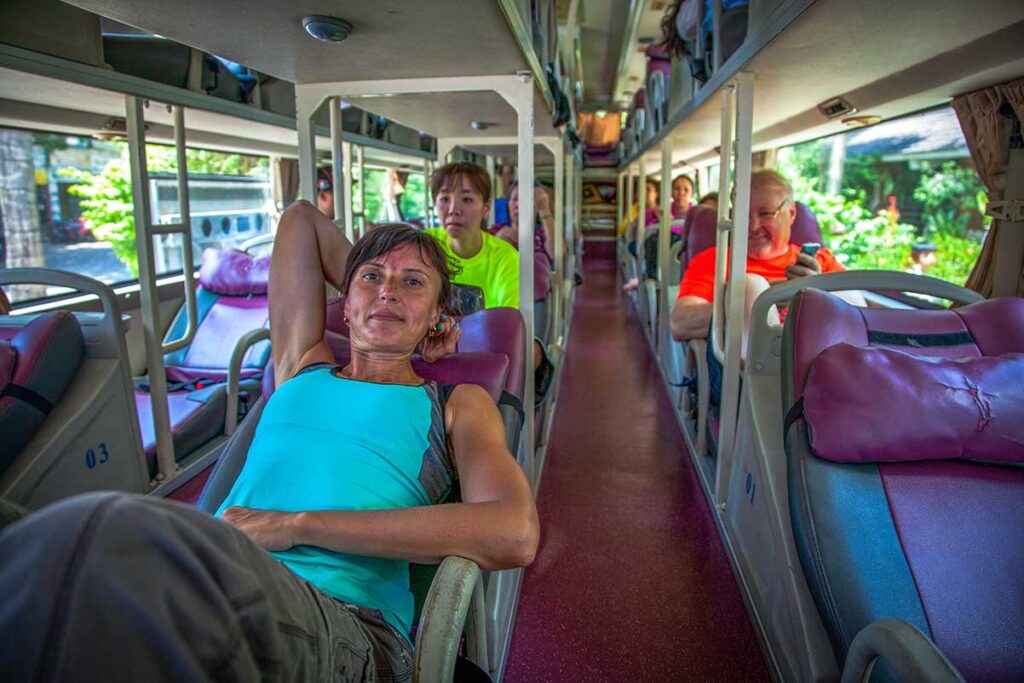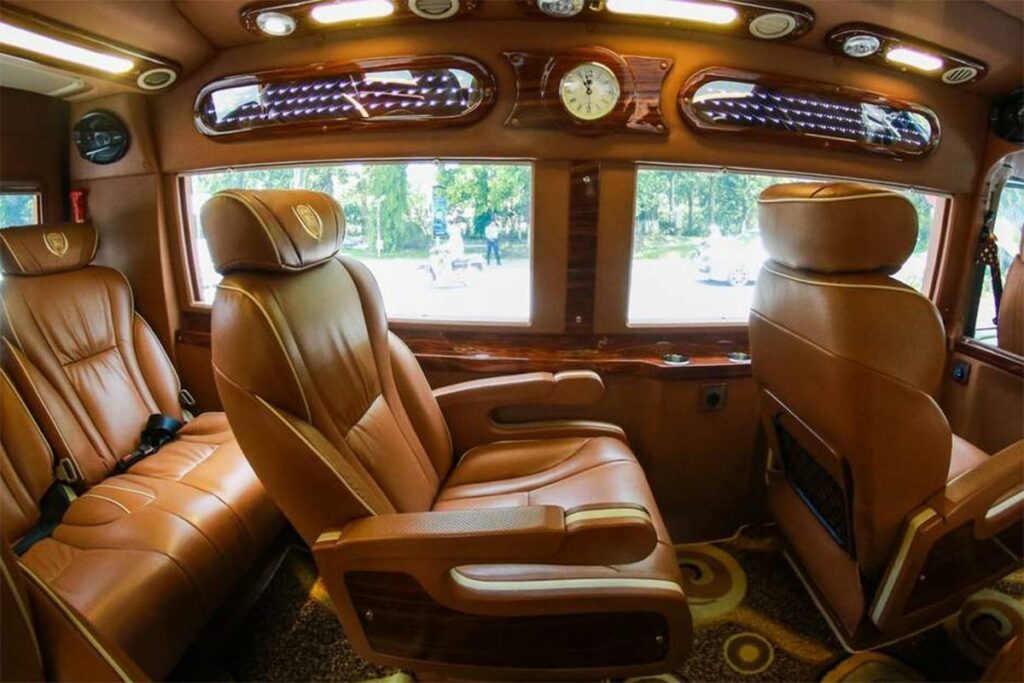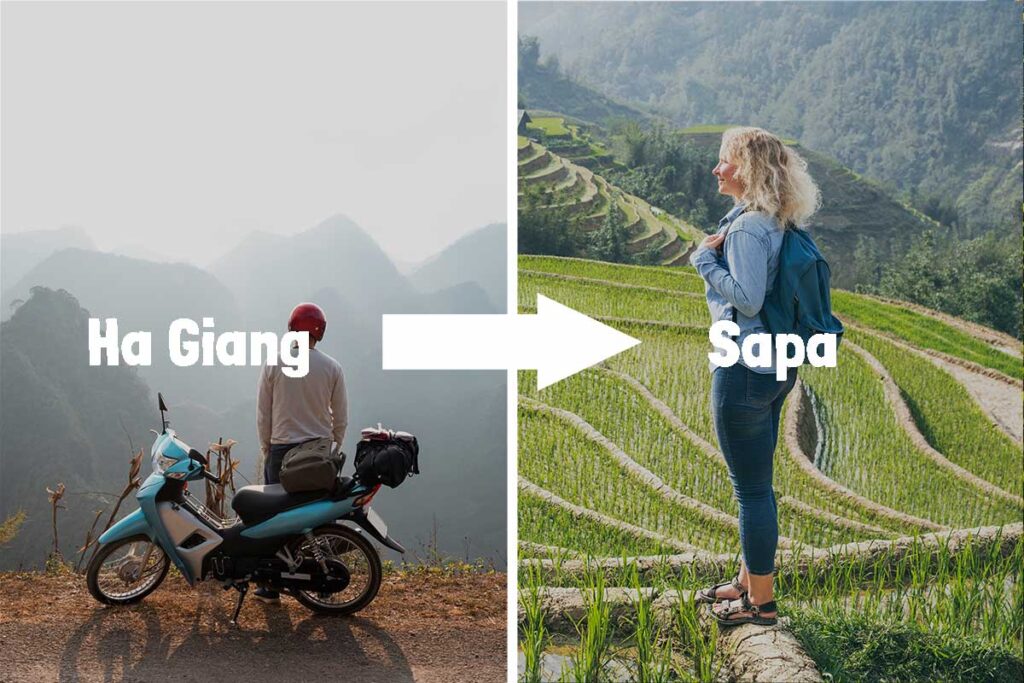Overview of the route from Ha Giang to Sapa
Why combine Ha Giang and Sapa?
Travelers often wonder whether to choose Sapa for trekking through terraced rice fields or Ha Giang for the epic Ha Giang Loop through Vietnam’s most stunning mountains.
If you’re still deciding, check our guide: Sapa or Ha Giang – Which is better?.
But if you have the time, the real question is — why not combine both? You get the best of both worlds: Ha Giang’s dramatic mountain passes and ethnic diversity, and Sapa’s iconic rice fields, trekking routes, and village life.
The route from Ha Giang to Sapa
The distance between Ha Giang and Sapa is roughly 225 to 250 kilometers, depending on which route you take.
Travel time is around 6 to 7 hours by bus or private car, or longer if you decide to take the more scenic route via Hoang Su Phi and Bac Ha.
The roads are mostly local highways, generally well-maintained but with some mountain curves. There’s no expressway between Ha Giang and Sapa, so speeds are slower than routes to bigger cities.
Historically, there were no direct buses between these towns because locals don’t usually travel this route. Ha Giang and Sapa are in different provinces and have little local economic connection. But with more travelers wanting to visit both, direct transport options now exist.
This means you no longer need to go back to Hanoi just to connect these two incredible destinations.
Option 1: Direct bus from Ha Giang to Sapa
How the bus works
Yes, there are direct buses from Ha Giang to Sapa, mainly created for travelers who want to visit both regions without going back to Hanoi.
That said, the service is still limited — buses run, but not in large numbers. They exist because of tourism demand, not because locals frequently travel this route.
Buses are typically a mix of limousine vans, daytime sleeper buses, and VIP sleeper buses. Unlike other routes in Vietnam, none of these operate as full overnight buses. The latest departures in the afternoon or evening will still arrive in Sapa around late evening or midnight.



It’s a relatively straightforward journey, but be prepared for some quirks. Buses often stop along the way to pick up extra passengers, locals, or even deliver packages. This is common in rural Vietnam and can extend the travel time slightly.
The roads are generally good, but the route goes through towns and local roads, meaning it’s not a fast highway ride. Despite this, it’s still the fastest and cheapest option if you’re happy to deal with the occasional delays or local detours.
Pro tip: You can also book a tour that combines Sapa and Ha Giang, including all transfers:
Sapa & the Ha Giang Loop – The Ultimate Combo Tour
- Experience: Ha Giang Loop by motorbike or car plus trekking through Sapa’s rice fields.
- Includes: All transfers from Hanoi, guide, accommodation, and most meals – fully organized.
Quick Facts – Direct bus
- Duration: 6–7 hours
- Departure: Ha Giang city center
- Arrival: Sapa town center
- Comfort level: Basic to decent (depends on the bus type)
- Cost: $15–20 USD
- Booking: Vexere, 12Go Asia, or local agencies in Ha Giang
- Best for: Budget travelers, or those who want a direct and affordable transfer
Option 2: Private car with driver
How the private car option works
A private car with driver is the most comfortable and convenient way to travel from Ha Giang to Sapa. It’s a door-to-door service, meaning you get picked up directly from your accommodation in Ha Giang and dropped off wherever you’re staying in Sapa.
Unlike buses, there are no unnecessary stops, no package pickups, and no waiting for other passengers. You can stop wherever you want — whether it’s for a coffee, lunch, or simply to enjoy a scenic mountain viewpoint.
Cars are generally better maintained than buses, offering a smoother and quieter ride. It’s also a faster option, since private cars drive more directly without detours.
Yes, it’s more expensive, but it’s an excellent choice for families, couples, or small groups who value comfort, privacy, and flexibility. It’s also a perfect fit if you’re doing a larger northern Vietnam loop, like Ha Giang → Sapa → Hanoi or vice versa.
Rent a private car with driver from Ha Giang to Sapa
We can arrange a private car with driver for your journey from Ha Giang to Sapa. Choose a direct transfer for speed and comfort, or turn it into a scenic road trip with stops in Hoang Su Phi, Xin Man, and Bac Ha, including overnight stays along the way. Flexible, comfortable, and fully customized to your plans.
Quick facts – Private car
- Duration: 6–6.5 hours
- Departure: Anywhere in Ha Giang
- Arrival: Anywhere in Sapa
- Comfort level: Very high – private, flexible, and comfortable
- Cost: ~$100–150 USD per car (fits 3–4 people)
- Booking: Local agencies (like Local Vietnam) or hotels
- Best for: Travelers who want comfort, flexibility, and door-to-door service
Option 3: Road trip with scenic stops (Multi-Day)
How a scenic road trip works
Instead of rushing the journey from Ha Giang to Sapa, you can turn it into a 2 or 3-day road trip, exploring some of the most beautiful and lesser-known areas in northern Vietnam.
There are several highly recommended stops along the way:
- Hoang Su Phi – A remote area known for having some of the most spectacular terraced rice fields in Vietnam, especially stunning from September to October.
- Xin Man – A quiet, off-the-beaten-path district with small ethnic villages and peaceful mountain landscapes.
- Bac Ha – Famous for its Sunday ethnic minority market, but also worth visiting anytime for its relaxed vibe, local villages, and scenic mountain views.
This route is ideal for photographers, slow travelers, or anyone wanting to avoid the tourist crowds and experience rural Vietnam at its best. You’ll drive through winding mountain roads, rice terraces, and remote valleys — a real contrast to the main highways.
It’s a trip that can be done by private car with driver or, for the more adventurous, by motorbike as part of a larger northern Vietnam loop.
Quick Facts – Scenic road trip
- Duration: 2–3 days (flexible)
- Departure: Ha Giang
- Arrival: Sapa (or continue to Hanoi)
- Comfort level: High – private car with driver or motorbike
- Cost: Varies depending on stops and duration (starting around $350–500 USD for 2–3 days with car + driver)
- Booking: Custom tours with agencies like Local Vietnam
- Best for: Travelers who want to combine hidden rice terraces, ethnic villages, and local markets into the journey
Option 4: Motorbike (Self-drive)
How the Motorbike Route Works
Riding a motorbike from Ha Giang to Sapa is an adventurous but challenging journey. This isn’t a simple transfer — it’s a proper road trip for experienced riders.
The most rewarding route goes through Hoang Su Phi, Xin Man, and Bac Ha, offering some of the most beautiful and remote landscapes in northern Vietnam. These roads are incredibly scenic but also less traveled, more rugged, and occasionally rough.
This trip is best done as part of a larger multi-day loop, such as Hanoi → Ha Giang (including the Ha Giang Loop) → Sapa → Hanoi.
Most motorbike rental companies don’t allow one-way rentals between Ha Giang and Sapa, so you’ll typically need to start your rental in Hanoi if you want to connect the two regions this way.
It’s not recommended for beginners or anyone short on time. But for experienced riders who enjoy off-the-beaten-path travel, it’s an incredible adventure with constantly changing scenery, ethnic villages, and mountain landscapes.
Quick facts – Motorbike
- Duration: Minimum 2 days (longer recommended)
- Departure: Ha Giang
- Arrival: Sapa (or part of a longer loop)
- Comfort level: Depends on riding experience – scenic but physically demanding
- Cost: ~$10/day (rental) + fuel
- Booking: Hanoi-based motorbike rentals (one-way from Ha Giang to Sapa is usually not possible)
- Best for: Experienced riders, adventure travelers, and photographers looking for a real road trip
Tips for traveling from Ha Giang to Sapa
Where to book bus tickets
You can book bus tickets online through Vexere (best for local operators) or 12Go Asia (more user-friendly for tourists). Both show schedules, prices, and available bus types.
Book buses in advance
Since the number of direct buses is limited, it’s smart to book at least a day or two in advance, especially during weekends, holidays, or peak seasons.
Private car is worth it for small groups
If you’re traveling with 2 to 4 people, the price difference between a private car and the bus isn’t that big when split. It’s a more comfortable, flexible, and efficient way to travel.
Road trip with stops is highly recommended
If you have time, turn the transfer into a mini road trip. Traveling via Hoang Su Phi and Bac Ha offers some of the best rice terraces, ethnic villages, and off-the-beaten-path scenery in northern Vietnam.
Prepare for local highway travel
The route between Ha Giang and Sapa is mostly local highways — not mountain passes like the Ha Giang Loop, but not expressways either. Expect a slower drive through small towns, occasional traffic, and some bumpy sections.




